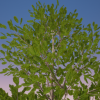Future of Daz characters in UE4
 Macislav
Posts: 126
Macislav
Posts: 126
I'm talking about a problem, which occurs more in the close-up view. (but not only)
As games are getting more and more realistic, Daz3d needs to keep up with the development.
Either the base mesh quality has to improve (Genesis 9) by some low two digit percentage or the 1st subdivision should be made accessible (bone driven morph targets included) for blender/UE4.
This would be the new LOD_0 and the current base mesh would then become LOD_1 (in Unreal Engine). This would be the most simple solution and would bring results comparable to the new MetaHuman as it seams to be just a very high poly body mesh and no unknown magic.
Currently as it stands, the faces have a too low polycount, the mouth interior included. In comparison Reallusions CC3 has much more refined faces (more triangles), the problem is esp. visible on the nose and chin, cheeks and ears...
Another problem are the elbows and the knees, which do not look so good, when bent (visible and sticking out edges).
The toenails and the balls of the feet need a better resolution as well and last but not least the ankles and shoulder blades need to become better defined.
My suggestion is to go for the "1st subdivision access" way, thus the characters would look more like they were originally intended to look.
What could help as well, would be to allow exporting a mesh with the "high resolution" setting: A setting that smoothens the edges of the base resolution mesh. Or is this just some modifier?




Comments
well to be fair the bridge does allow you to export the level 1 hd, then you can have both level 0 and 1 and make a sort of "LOD" using both, also all is matter is the game and "how close to the character the cam is, for exemple for games with cam far away from the character then level 0 is fine for games with extreme close-up you can use level 1.
You can tessellate the mesh to a higher resolution via materials.
You can add JCM's when sending to Unreal 4 as part of the morph export option. There is a ABP example included as part of the installed plugin kit that you can use to inject JCM's based on joint rotation.
You can edit the project file to target to custom materials instead of using the default import version.
As it stands the current bridge version is the second iteration and has already improved in 4.26. I would expect that improvements will be on going but in most cases any solution will need additional work to get the desired result based on personal requirements.
I could solve the ellbow and knee issue by adjusting the shapekeys (changed position of a few vertrices). Now it looks ok.
But middle-term I would wish for an overall slightly higher mesh resolution and more advanced shape keys, so the characters would deform even more realistically.
For smooth shapes in unreal engine, check PN Tesellation checkbox from material properties. Here is my full article : https://www.daz3d.com/forums/discussion/452926/daz-to-unreal-bridge-materials-plugin-fix-morph-exporting-smooth-meshes-fix
Tessallation alone will do nothing, because how should it know how to use those additional triangles+all morph targets, it gives just a higher polycount. And I've got only Blender.
A different approach is to go through Character Creator / iClone, and from there go to Unreal Engine.
I've just posted a pic in the gallery of a converted DAZ character, looks pretty good IMO: